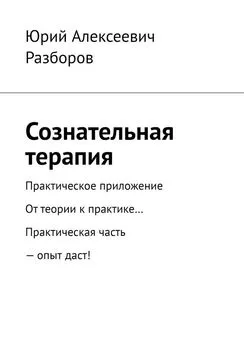Карл Хайнц Бриш - Терапия нарушений привязанности. От теории к практике
- Название:Терапия нарушений привязанности. От теории к практике
- Автор:
- Жанр:
- Издательство:Литагент «Когито-Центр»881f530e-013a-102c-99a2-0288a49f2f10
- Год:2012
- Город:Москва
- ISBN:978-5-89353-363-7, 978-3-608-94532-4
- Рейтинг:
- Избранное:Добавить в избранное
-
Отзывы:
-
Ваша оценка:
Карл Хайнц Бриш - Терапия нарушений привязанности. От теории к практике краткое содержание
В книге с позиции психоанализа рассказывается об опыте применения теории привязанности в клинической практике. Кратко изложена история возникновения теории привязанности, представлены методы и результаты научных исследований по данной проблеме, а также различные подходы к классификации так называемых «нарушений привязанности». Научные выводы подкрепляются описанием отдельных показательных случаев из клинической практики на материале историй болезни всех возрастных групп пациентов. В заключительной части книги рассказывается о возможностях плодотворного практического применения знаний по теории привязанности в таких областях, как профилактика, педагогика, семейная и групповая терапия.
Терапия нарушений привязанности. От теории к практике - читать онлайн бесплатно ознакомительный отрывок
Интервал:
Закладка:
Sameroff A. J. & Emde R. N. (1989). Relationship disturbances in context. In:
A. J. Sameroff & R. N. Emde (Hrsg.). Relationship disturbances in early childhood: A developmental approach. NY: Basic Books, 221–255.
Saß H., Wittchen H.-U. & Zaudig M. (Hrsg.) (1996). Diagnostisches und statistisches Manual psychischer Störungen. DSM-IV. Göttingen–Bem–Toronto–Seattle: Hogrefe.
Schain J. (1989). The new infant research: Some implications for group therapy. Group, 13 (2), 112–122.
Scheuerer-Englisch H. (1989). Das Bild der Vertrauensbeziehung bei 10 jährigen Kindern und ihren Eltern. Unveröffentl. Diss., Regensburg.
Schieche M. & Spangler G. (1994). Biobehavioral organization in one-year-olds: Quality of mother–infant attachment and immunological and adrenocortical regulation. Pychologische Beiträge, 36, 30–35.
Schmidt S. & Strauß В. (1996). Die Bindungstheorie und ihre Relevanz für die Psychotherapie. Psychotherapeut, 41, 139–150.
Schmücker G., Buchheim A., Köhntop В., Betzier S., Pohlandt F., Pokorny D., Kächele H. & Brisch K. H. (2000). Mother–child interaction of very low birthweight premature infants: Investigating the influence of neurobiological risk factors and a psychotherapeutic intervention. 7 thCongress World Association for Infant Mental Health, Montreal/Canada, 28 July.
Schmücker G., Brisch K. H., Köhntop В., Betzier S., Osterle М., Kächele Н., Pohlandt F., Pokorny D., Laucht M. & Buchheim A. (2005). The influence of prematurity, matemal anxiety, and infants’ neurobiological risk on mother-infant interactions. Infant Mental Health Journal, 26 (5), 423–441.
Schore A. N. (1996). The experience-dependent maturation of regulatory system in the orbital prefrontal cortex and the origin of developmental psychopathology. Development and Psychopathology, 8, 59–87.
Schore A. N. (1997). Early development of the nonliniar right brain and development of a predisposition to psychiatric disorders. Development and Psychopatholgy, 9, 595–631.
Schore A. N. (2001a). The effects of early relational trauma on right brain development, affect regulation, and infant mental health. Infant Mental Health Journal, 22, 201–269.
Schore A. N. (2001b). Effects of secure attachment relationship on right brain development, affect regulation, and infant mental health. Infant Mental Health Journal, 22, 7–66.
Schore A. N. (2007). Affektregulation und die Reorganisation des Selbst. Stuttgart: Klett-Cotta.
Schore J. R. & Schore A. (2008). Modem attachment theory: The central role of affect regulation in development and treatment. Clinical Social Work Journal, 36, 9–20.
Schramm E. (1996). Interpersonelle Psychotherapie. Stuttgart–NY: Schattauer.
Schuengel C., Bakermans-Kranemburg M. J. & van IJzendoorn M. H. (1999a). Frightening maternal behavior linking unresolved loss and disorganized infant attachment, Journal of Consulting and Clinical Psychology, 67, 54–63.
Schuengel C., Bakermans-Kranemburg M.J., van IJzendoorn M.H. & Blom M. (1999b). Unresolved loss and infant disorganization: Links to frightening maternal behavior. In: J. Solomon & C. George (Hrsg.). Attachment disorganization. NY– London: Guilford Press, 71–94.
Schur M. (1960). Discussion of Dr. John Bowlby’s paper. Psychoanalytic Study of the Child, 15, 63–84.
Segal H. (1983). Melanie Klein. Eine Einführung in ihr Werk. Frankfurt/M.: S. Fischer.
Silverman R. C. & Lieberman A. F. (1999). Negative maternal attributions, projective identification, and the intergenerational transmission of violent relational patterns. Psychoanalytic Dialogues, 9, 161–186.
Slade A. (2007). Disorganized mother, disorganized child: The mentalization of affective dysregulation and therapeutic change. In: D. Oppenheim & D. F. Goldsmith (Hrsg.). Attachment theory in clinical work with children. NY: Guilford Press, 226–250.
Solomon J. & George C. (Hrsg.) (1999a). Attachment disorganization. NY–London: Guilford Press.
Solomon J. & George C. (1999b). The caregiving system in mothers of infants: A comparison of divorcing and married mothers. Attachment & Human Development, 1, 171–190.
Solomon J. & George C. (1999c). Toward an integrated theory of maternal caregiving. In: J. Osofsky & H. E. Fitzgerald (Hrsg.). WAIMH. Handbook of infant mental health. Ed. 3. NY: Wiley, 323–368.
Spangler G. (1998). Attachment representation and emotional regulation: A psychobiological perspective. Development, Structure, and Functioning of Internal Working Models. Symposium Universität Regensburg, 6–7 July 1998.
Spangler G. & Grossmann K. E. (1993). Biobehavioral organization in securely and insecurely attached infants. Child Development, 64, 1439–1450.
Spangler G. & Schieche M. (1995). Psychobiologie der Bindung. In: G. Spangler & P. Zimmermann (Hrsg.). Die Bindungstheorie. Grundlagen, Forschung und Anwendung. Stuttgart: Klett-Cotta, 297-31o.
Spangler G. & Zimmermann P. (Hrsg.) (1995). Die Bindungstheorie. Grundlagen, Forschung und Anwendung. Stuttgart: Klett-Cotta.
Spangler G., Johann M., Ronai Z. & Zimmermann P. (eingereicht). Genetic and environmental influence on attachment disorganization.
Spieker J. & Booth C. L. (1988). Maternal antecedents of attachment quality. In:
J. Belsky & T. Nezworski (Hrsg.). Clinical implications of attachment. Hillsdale,
NJ: Erlbaum, 95–135.
Spitz R.A. (1957). Die Entstehung der ersten Objektbeziehungen. Stuttgart: Klett-Cotta.
Spitz R. A. (1960). Discussion of Dr. John Bowlby’s paper. Psychoanalytic Study of the Child, 15, 113–117.
Spitz R. A. (1967). Vom Säugling zum Kleinkind. Naturgeschichte der Mutter-Kind – Beziehungen im ersten Lebensjahr. Stuttgart: Klett-Cotta.
Spitzer M. (2000). Das hast Du von der Mutter – aber nicht geerbt. Nichtgenetische Weitergabe von Charaktereigenschaften über mehrere Generationen im Tier – experiment. Nervenheilkunde, 19, 48–87.
Sroufe L. А. (1979). The coherence of individual development: Early care, attachment and subsequent developmental issues. American Psychologist, 34, 84–841.
Sroufe L. A. (1985). Attachment classification from the perspective of infant-caregiver relationships and infant temperament. Child Development, 56, 1–14.
Sroufe L.A. & Fleeson J. (1988). The coherence of family relationships. In: R.A. Hinde & J. Stevenson-Hinde (Hrsg.). Relationships within families. Mutual Influences. Oxford: Clarendon Press, 27–47.
Sroufe L. A. & Rutter M. (1984). The domain of developmental psychopathology. Child Development, 55, 17–29. Steele H. & Steele M. (1994). Intergenerational patterns of attachment. Advances in Personal Relationships, 5, 93–120.
Steele M., Hodges J., Kaniuk J., Henderson K., Hillman S. & Bennett P. (2002). Weitererzählungen von Geschichten als Methode zur Erfassung der inneren Welt des Kindes – Implikationen fur die Adoption. In: K. H. Brisch K. E. Grossmann,
K. Grossmann & L. Köhler (Hrsg.). Bindung und seelische Entwicklungswege – Grundlagen, Prävention und klinische Praxis. Stuttgart: Klett-Cotta, 339–352.
Stern D. (1989). The representation of relational patterns: Developmental consideration. In: A. J. Sameroff & R. N. Emde (Hrsg.). Relationship disturbances in early childhood: A developmental approach. NY: Basic Books, 52–69.
Stern D. (1992). Die Lebenserfahrung des Säuglings. Stuttgart: Klett-Cotta.
Stevenson-Hinde J. (1990). Attachment within family systems: An overview. Infant Mental Health Journal, 218–227. Stierlin H. (1980). Von der Psychoanalyse zur Familientherapie. Stuttgart: Klett-Cotta. Strauß В. (2008). Bindung und Psychopathologie. Stuttgart: Klett-Cotta. Strauß B. & Schmidt S. (1997). Die Bindungstheorie und ihre Relevanz für die Psy
chotherapie. Psychotherapeut, 42, 1–16. Stuhr, U. (1993). Die Deutungsarbeit im psychoanalytischen Dialog. Göttingen: Vandenhoeck & Ruprecht.
Suess G. J., Grossmann K. E. & Sroufe L. A. (1992). Effects of infant attachment to mother and father on quality of adaption in preschool: From dyadic to individual organization of self International Journal of Behavioral Development, 15, 43–65.
Target M., Fonagy P. & Shmueli-Goetz Y. (2003). Attachment representations in school-age children: The development of the child attachment interview (CAI). Journal of Child Psychopathology, 29, 171–186.
Teicher M. H. (2000). Wounds that time won’t heal: The neurobiology of child abuse. Cerebrum, 4, 50–67.
Teicher M. H., Polcari A., Andersen S. L., Anderson C. M. & Navalta C. (2003). Neurobiological effects of childhood stress and trauma. In: S. W. Coates (Hrsg.). September 11, trauma and human bonds. Hillsdale: The Analytic Press, 211–238.
Thomä H. & Kächele H. (1985). Lehrbuch der psychoanalytischen Therapie. Bd. 1: Grundlagen. Berlin–Heidelberg: Springer. Tinbergen N. (1952). Instinktlehre. Vergleichende Erforschung angeborenen Verhaltens. Berlin–Hamburg: Parey. Tress W. (1986). Das Rätsel der seelischen Gesundheit. Traumatische Kindheit und früher Schutz gegen psychogene Störungen. Göttingen: Vandenhoeck & Ruprecht.
Uvnäs-Moberg K. (2007). Die Bedeutung des Hormons «Oxytocin» für die Entwicklung der Bindimg des Kindes und der Anpassungsprozesse der Mutter nach der Geburt. In: K. H. Brisch & T. Hellbrügge (Hrsg.). Die Anfänge der EltemKind-Bindung. Stuttgart: Klett-Cotta, 183–212.
Uvnäs-Moberg K. & Petersson M. (2005). Oxytocin, ein Vermittler von Antistress, Wohlbefinden, sozialer Interaktion, Wachstum und Heilung. Zeitschrift fur Psychosomatische Medizin und Psychotherapie, 51, 57–80.
van den Boom D. C. (1990). Preventive intervention and the quality of mother-infant interaction and infant exploration in irritable infants. In: W. Koops, H. Soe,
J. van der Linden, P. C. M. Molenaar & J. J. F. Schroots (Hrsg.). Developmental psychology behind the dikes. Delft/NL: Uitgeverij Ekuron, 249–268.
van den Boom D.C. (1994). The influence of temperament and mothering on attachment and exploration: An experimental manipulation of sensitive responsiveness among lower-class mothers with irritable infants. Child Development, 65, 1457–1477.
van der Hart O., Nijenhuis E. R. S. & Steele K. (2008). Das verfolgte Selbst: Strukturelle Dissoziation und die Behandlung chronischer Traumatisierung. Paderborn: Junfermann. (Engl. Original: The haunted self. Structural dissociation and the treatment of chronic traumatization. NY: Norton.)
van IJzendoorn M. H. (1995). Adult attachment representations, parental responsiveness and infant attachment: A meta-analysis on the predictive validity of the adult attachment interview. Psychological Bulletin, 117, 387–403.
van IJzendoorn M. H. & Bakermans-Kranenburg M. J. (1996). Attachment representations in mothers, fathers, adolescents and clinical groups: A meta-analytic search for normative data. Journal of Consulting and Clinical Psychology 64 (1), 8–21.
van IJzendoorn M.H. & Bakermans-Kranenburg M.J. (1997). Intergenerational transmission of attachment: A move to the contextual level. In: L. Atkinson & K. J. Zucker (Hrsg.). Attachment and psychopathology. NY–London: Guilford Press, 135–170.
van IJzendoorn M. H. & De Wolff M. (1997). In search of the absent father – metaanalysis of infant-father attachment: A rejoinder to our discussant. Child Development, 68, 604–609.
van IJzendoorn M. H., Frenkel O. J., Goldberg S. & Kroonenberg P. M. (1992). The relative effects of maternal and child problems on the quality of attachment: A me-ta-analysis of attachment in clinical samples. Child Development, 63, 840–858.
van IJzendoorn M.H., Juffer E. & Duyvesteyn M.G.C. (1995). Breaking the inter-generational cycle of insecure attachment: A review of the effects of attachment-based interventions on maternal sensitivity and infant security. Joumal of Child Psychology and Psychiatry and Allied Disciplines, 36, 225–248.
Читать дальшеИнтервал:
Закладка:






